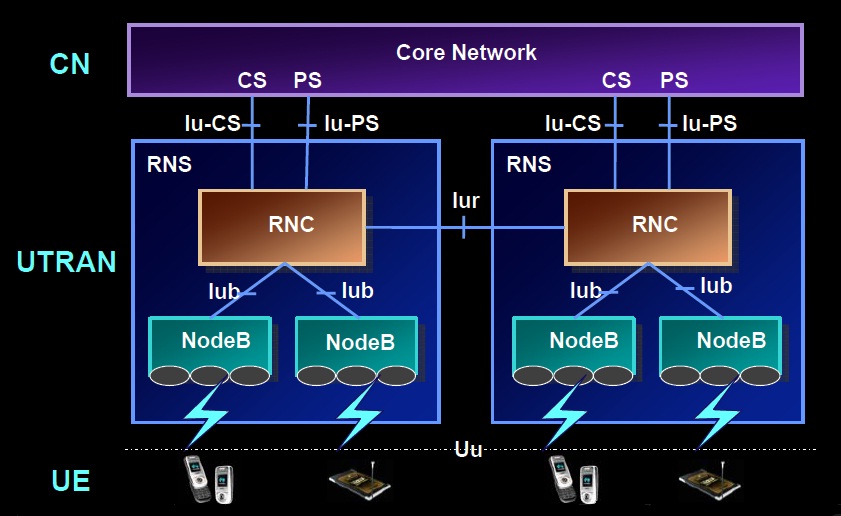UTRAN (UMTS Terrestrial Radio Access network) structure The UTRAN consists of one or several Radio Network Subsystem ( RNS ), each containing one RNC and one or several NodeB.

Interface
Iu interface: the Iu interface connects the UTRAN to the CN and is split in two parts. The Iu-CS is the interface between the RNC and the circuit switched domain of the CN. The Iu-PS interface is the interface between the RNC and the packet switched domain of the CN.
Uu interface: the Uu interface is the WCDMA radio interface with in UMTS. It is the interface through which the UMTS UE accesses the fixed part of the network.
Iub interface: the Iub interface connects the UMTS NodeB and the RNC. Contrarily to GSM, this interface is fully open in UMTS and thus more competition is expected.
Iur interface: the RNC-RNC interface was initially designed in order to provide inter RNC soft handover, but more features were added during the development.
A UMTS network consist of three interacting domains; Core Network (CN), UMTS Terrestrial Radio Access Network (UTRAN) and User Equipment (UE). The main function of the UMTS core network is to provide switching, routing and transit for UMTS user traffic. Core network also contains the databases and UMTS network management functions.
The basic UMTS Core Network architecture for UMTS is based on GSM network with GPRS. All equipment has to be modified for UMTS operation and UMTS services. The UMTS UTRAN provides the air interface access method for User Equipment. Base Station is referred as Node-B and UMTS control equipment for Node-B’s is called Radio Network Controller (RNC). UMTS system page has an example, how UMTS network could be build.
